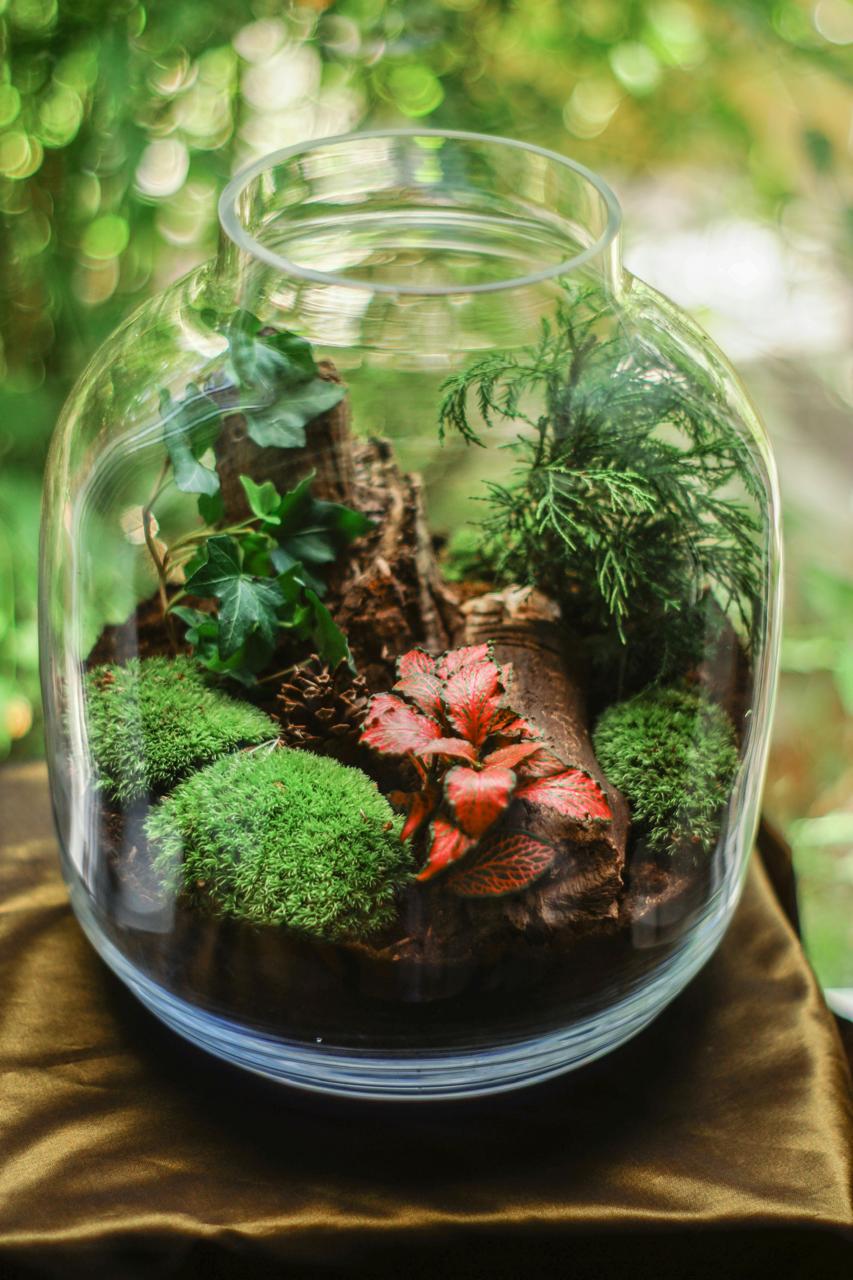
How to Create a Stunning Terrarium: A Beginner’s Guide
Share
Terrariums are not just beautiful decor pieces; they’re also low-maintenance ecosystems that can bring a bit of nature into your home. If you’ve always wanted to create your own tiny green world, here’s a step-by-step guide to help you build a stunning terrarium.
- *Fittonia* (also known as the nerve plant) for its vibrant, colorful leaves
- *Ferns* for their lush greenery
- *Peperomia* for a more compact, textured look
- *Polka Dot Plant* for a pop of color
- *Moss* for a soft, natural carpet covering
You can also add some decorative elements like *driftwood* and *rocks* to create visual interest. These will act as hardscape features and give your terrarium a natural, earthy vibe.
2. Add a layer of *charcoal* over the gravel to keep the air fresh.
3. Place the *screen mesh* on top to separate the soil from the charcoal.
4. Carefully add your *soil* on top of the mesh, creating a layer thick enough to support your plants.
5. Now it's time to plant! Gently place your plants into the soil, making sure they have enough space to grow.
6. Add any decorative *driftwood, **rocks*, or other features.
---
With these tips, you’ll be well on your way to creating a stunning and self-sustaining terrarium that’s sure to be a conversation starter in any room. Happy gardening!
- What You’ll Need:
- Filtration Materials*
- Substrate*
- Planting Your Terrarium
- *Fittonia* (also known as the nerve plant) for its vibrant, colorful leaves
- *Ferns* for their lush greenery
- *Peperomia* for a more compact, textured look
- *Polka Dot Plant* for a pop of color
- *Moss* for a soft, natural carpet covering
You can also add some decorative elements like *driftwood* and *rocks* to create visual interest. These will act as hardscape features and give your terrarium a natural, earthy vibe.
- Optional Additions:
- Preparing the Soil:
- Assembling Your Terrarium
2. Add a layer of *charcoal* over the gravel to keep the air fresh.
3. Place the *screen mesh* on top to separate the soil from the charcoal.
4. Carefully add your *soil* on top of the mesh, creating a layer thick enough to support your plants.
5. Now it's time to plant! Gently place your plants into the soil, making sure they have enough space to grow.
6. Add any decorative *driftwood, **rocks*, or other features.
- Where to Keep Your Terrarium
- Caring for Your Terrarium
---
- Design Inspiration
With these tips, you’ll be well on your way to creating a stunning and self-sustaining terrarium that’s sure to be a conversation starter in any room. Happy gardening!
